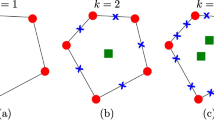
Overview
- Provides a comprehensive review of the rapidly expanding field of the virtual element methods
- Includes in-depth discussions on the design and analysis of the virtual element method
- Covers a vast array of special topics and applications illustrating the wide use of the virtual element method
Part of the book series: SEMA SIMAI Springer Series (SEMA SIMAI, volume 31)
Access this book
Tax calculation will be finalised at checkout
Other ways to access
About this book
The purpose of this book is to present the current state of the art of the Virtual Element Method (VEM) by collecting contributions from many of the most active researchers in this field and covering a broad range of topics: from the mathematical foundation to real life computational applications.
The book is naturally divided into three parts. The first part of the book presents recent advances in theoretical and computational aspects of VEMs, discussing the generality of the meshes suitable to the VEM, the implementation of the VEM for linear and nonlinear PDEs, and the construction of discrete hessian complexes. The second part of the volume discusses Virtual Element discretization of paradigmatic linear and non-linear partial differential problems from computational mechanics, fluid dynamics, and wave propagation phenomena. Finally, the third part contains challenging applications such as the modeling of materials with fractures, magneto-hydrodynamics phenomena and contact solid mechanics.
The book is intended for graduate students and researchers in mathematics and engineering fields, interested in learning novel numerical techniques for the solution of partial differential equations. It may as well serve as useful reference material for numerical analysts practitioners of the field.
Similar content being viewed by others
Keywords
- Virtual Element Method
- Galerkin Methods
- Polygonal and Polytopal Meshes
- Linear and Nonlinear Partial Differential Equations
- Discrete Hessian Complexes in Three Dimensions
- Elasticity
- Divergence-free Methods for Fluidodynamics
- Boundary Element Methods
- Eigenvalue Problems
- Oseen Equation
- Helmholtz Equation
- Polyharmonic Problems
- Nonlinear and Fracture Solid Mechanics
- Magneto-Hydrodynamics
- Fractured Materials
- Contact problems
Table of contents (13 chapters)
-
Front Matter
Editors and Affiliations
About the editors
Lourenço Beirão da Veiga is a full professor in numerical analysis at the University of Milano-Bicocca, Italy. His research mainly concerns the development and theoretical analysis of numerical methods for partial differential equations, with a particular focus on solid and fluid mechanics. His more recent interests are on novel and nonstandard methodologies such as isogeometric analysis, mimetic finite differences, and virtual element methods.
Gianmarco Manzini is a research director of the Consiglio Nazionaledelle Ricerche in Pavia, Italy and a senior scientist at the Los Alamos National Laboratory in Los Alamos, New Mexico. His research interests mainly concern the design and implementation of numerical methods for partial differential equations, with a special focus on numerical methods for polygonal and polyhedral meshes such as finite volumes, mimetic finite differences, and virtual element methods.
Bibliographic Information
Book Title: The Virtual Element Method and its Applications
Editors: Paola F. Antonietti, Lourenço Beirão da Veiga, Gianmarco Manzini
Series Title: SEMA SIMAI Springer Series
DOI: https://doi.org/10.1007/978-3-030-95319-5
Publisher: Springer Cham
eBook Packages: Mathematics and Statistics, Mathematics and Statistics (R0)
Copyright Information: The Editor(s) (if applicable) and The Author(s), under exclusive license to Springer Nature Switzerland AG 2022
Hardcover ISBN: 978-3-030-95318-8Published: 09 October 2022
Softcover ISBN: 978-3-030-95321-8Published: 10 October 2023
eBook ISBN: 978-3-030-95319-5Published: 08 October 2022
Series ISSN: 2199-3041
Series E-ISSN: 2199-305X
Edition Number: 1
Number of Pages: XXIV, 605
Number of Illustrations: 1 b/w illustrations
Topics: Analysis, Applications of Mathematics



